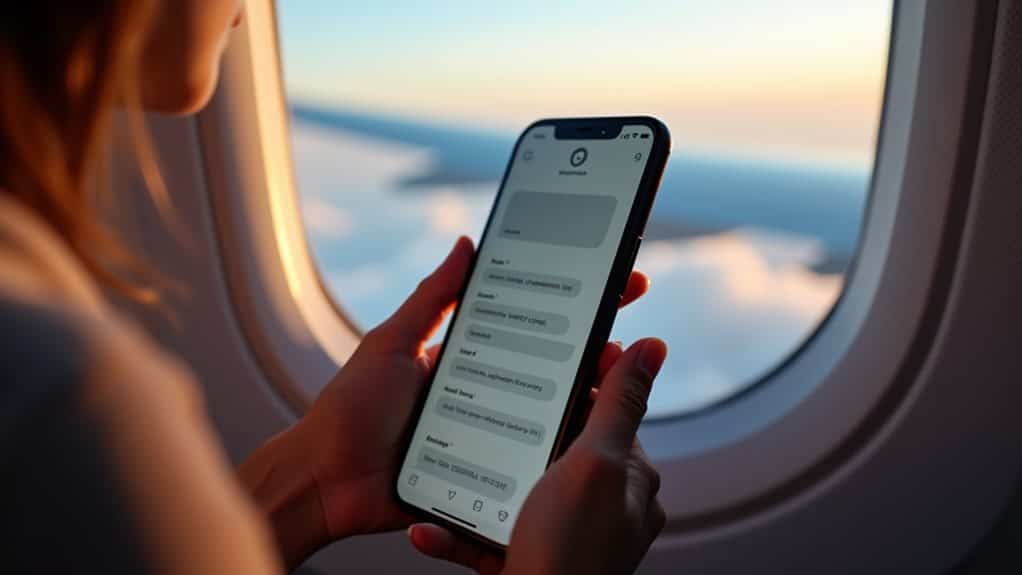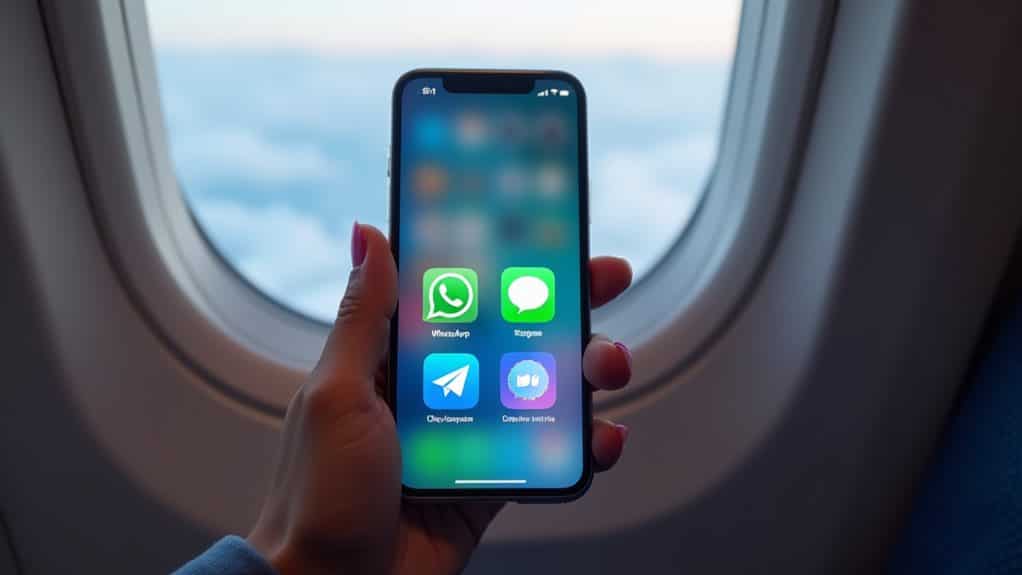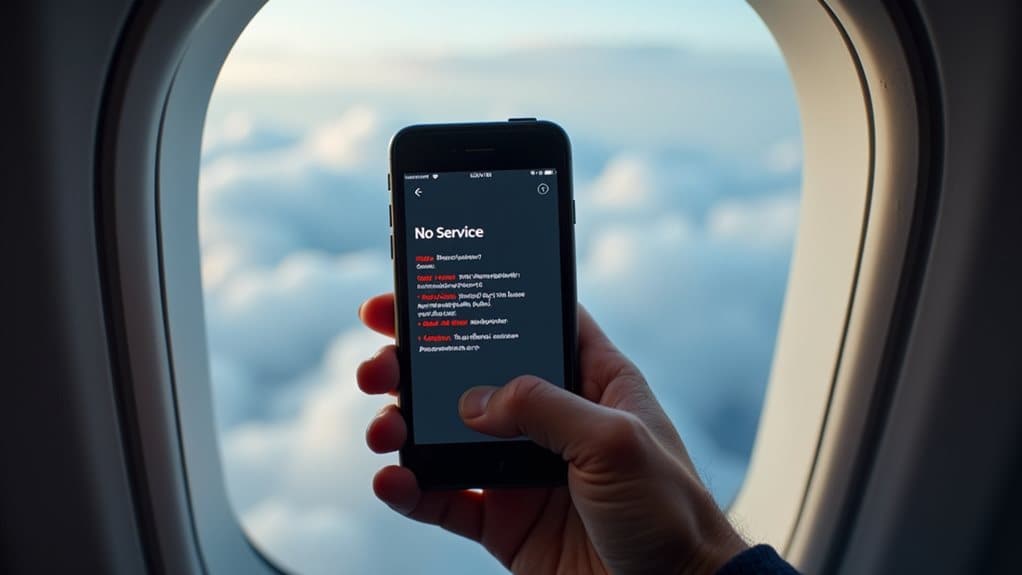You can’t send traditional text messages on airplanes since airplane mode disables cellular communication, but you can message through internet-based apps like WhatsApp, iMessage, and Facebook Messenger once you connect to in-flight Wi-Fi. Most airlines charge $6-10 for Wi-Fi access, though some offer free texting through specific messaging apps without requiring a full internet plan. Voice calls remain prohibited during flights, and slower connection speeds may affect message delivery and media file transmission, creating additional communication barriers you’ll want to understand.
TLDR
- Airplane mode disables cellular texting, but Wi-Fi can be re-enabled to use internet-based messaging apps.
- WhatsApp, iMessage, WeChat, and Facebook Messenger work on flights when connected to in-flight Wi-Fi.
- Airlines charge $6-10 for Wi-Fi access, though some offer free texting through specific messaging apps.
- Slower Wi-Fi speeds and network congestion can cause delays in message delivery during flights.
- Voice calls remain prohibited on flights, but text-based communication through apps is permitted with Wi-Fi.
How Airplane Mode Affects Your Ability to Send Messages

When you activate airplane mode on your device, it immediately disables all cellular communication capabilities, which means you can’t send or receive standard text messages that rely on your carrier’s network. However, you can manually re-enable Wi-Fi while keeping cellular disabled, allowing internet-based messaging apps like WhatsApp, iMessage, and Facebook Messenger to function normally. To avoid unexpected charges, it’s recommended to download messaging apps before your flight rather than attempting to install them using the airline’s Wi-Fi service. Compliance with FAA regulations ensures that your device usage does not interfere with crucial flight operations.
In-Flight WiFi Options and Pricing Across Airlines
Most airlines offer in-flight Wi-Fi with varying speeds and costs. United charges $8-10 per device, Alaska Airlines offers streaming-capable service for $8, while Spirit provides basic browsing for $6 and streaming for $8. Air France is introducing free ultra-high-speed Wi-Fi on all aircraft by 2025 through their partnership with Starlink. Additionally, it’s important to be aware of airline regulations regarding the use of portable chargers to ensure your devices remain powered during the flight.
Which Messaging Apps Work Best During Flight

Although most airlines now offer Wi-Fi services, not all messaging apps perform equally well during flight.
WhatsApp, Apple iMessage, WeChat, and Facebook Messenger work best since they use internet connections rather than cellular signals.
Many airlines offer free texting through iMessage, WhatsApp, and Facebook Messenger without requiring paid Wi-Fi plans, making them your most cost-effective options. Additionally, it’s important to note that vaping regulations on planes can affect your in-flight experience, so be sure to familiarize yourself with airline policies before traveling.
Legal Requirements for Business Text Communications on Flights
Business text communications during flights operate under a complex web of federal, state, and international regulations that you must steer carefully.
The TCPA requires express written consent before sending business texts, while the CAN-SPAM Act mandates clear opt-out mechanisms.
State laws vary considerably, with Connecticut imposing fines up to $20,000 for violations and California’s CCPA requiring specific disclosure requirements. Additionally, it’s crucial to understand that air travel regulations can impact how and when you communicate during flights.
Common Challenges and Limitations of Mid-Flight Texting

While business communications continue around the clock on the ground, mid-flight texting presents unique obstacles that can disrupt your workflow and communication plans.
You’ll encounter slower Wi-Fi speeds, network congestion, and bandwidth limitations that affect message delivery.
Media files often won’t send, voice calls are prohibited, and some airlines charge for internet access, creating additional barriers to seamless communication.
And Finally
You can text on airplanes, but it depends on your airline’s WiFi availability and your chosen messaging platform. While airplane mode blocks cellular signals, connecting to in-flight WiFi enables most messaging apps to function normally. However, you’ll face limitations like slower speeds, higher costs, and potential connectivity issues. Before your next flight, research your airline’s WiFi options and download offline-capable apps to guarantee you stay connected when needed.



